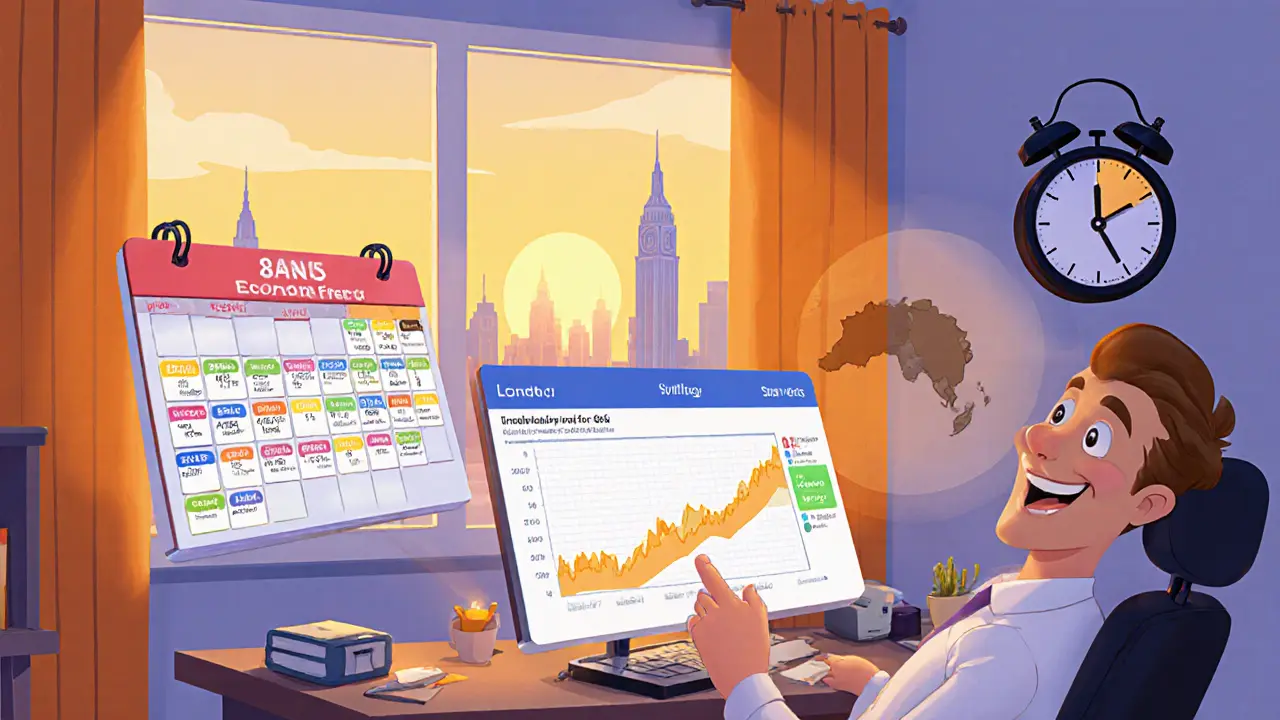Spot Market Liquidity Cost Calculator
Calculate Your Trade Costs
Estimate transaction costs based on liquidity metrics to optimize your trading strategy
Estimated Transaction Costs
Enter your trade details to see estimated costs
Note: These estimates are based on average market conditions from the article data. Actual costs may vary based on real-time market conditions. For major pairs during peak liquidity, spreads can be as low as 0.6 pips (as mentioned in the article).
When you hear traders talk about "getting in and out fast," they’re really talking about the health of the spot market liquidity the ability to buy or sell an asset instantly at a price that reflects true market value. In a world where a single forex trade can move $7.5trillion a day, understanding how liquidity works and how execution happens can mean the difference between a profitable trade and a costly slip‑up. This guide walks you through the core concepts, the numbers that matter, and practical steps you can take today to trade more efficiently.
What Is a Spot Market?
A spot market a financial venue where assets are exchanged for immediate delivery, typically settled within one to two business days differs from futures or options because the transaction closes almost right away. The most famous spot market is the foreign‑exchange (Forex) market, which processes over $7.55trillion daily according to 2023 data. Other popular spot assets include metals like gold and silver, large‑cap equities, and even cryptocurrencies when they trade on cash‑settlement platforms.
Spot Market Liquidity: How It’s Measured
Liquidity isn’t a single number; it’s a blend of metrics that tell you how easily you can move in and out of a position.
- Bid‑ask spread the difference between the highest price a buyer will pay and the lowest price a seller will accept. Narrow spreads (a few cents for stocks or 0.1‑0.5 pips for major forex pairs) signal high liquidity.
- Trading volume the total number of contracts or units changing hands over a given period. Higher volume usually tightens spreads and reduces slippage.
In practice, the two move hand‑in‑hand. For example, EUR/USD- the world’s most liquid pair-averages a spread of about 0.6pips and sees daily volumes exceeding $1trillion. By contrast, an exotic pair like USD/TRY can have spreads of 15‑20pips and dramatically lower volumes, making fast execution riskier.

Execution in Spot Markets: Speed and Costs
Execution refers to how quickly and accurately your order reaches the market and gets filled. In a high‑liquidity environment, execution is near‑instant, and the price you see is the price you get.
Key factors that influence execution quality include:
- Depth of the order book - more layers mean less impact for large orders.
- Presence of Electronic Communication Networks (ECNs) digital platforms that match buy and sell orders from multiple liquidity providers like EBS or Reuters Matching.
- Latency - the time it takes for your order to travel from your platform to the venue.
Retail traders often see execution costs of just a few tenths of a pip on major pairs, while institutional players can shave off additional basis points by accessing deep pools directly through banks such as JPMorgan or UBS.
Liquidity Drivers and Risks
Liquidity isn’t static; it ebbs and flows with market participants, news cycles, and regulatory changes.
Institutional liquidity providers large banks and hedge funds that supply the bulk of buying and selling interest in the spot market control roughly 75% of interbank forex liquidity. When they step back-say, during weekend gaps or major macro events-liquidity can dry up fast. A classic case is the GBP/JPY slippage event during a BoE announcement, where traders saw 15‑pip moves because order books thinned dramatically.
Regulatory shifts also shape the landscape. Europe’s MiFIDII, for instance, increased transaction reporting transparency but reduced the size of anonymous liquidity pools by about 22%, nudging some traders toward regulated venues.
Emerging technology adds another layer. AI‑driven tools, like JPMorgan’s LOXM platform, predict short‑term liquidity spikes and can lower execution costs by up to 20%. Yet reliance on algorithms introduces new model‑risk considerations.
Spot Liquidity vs. Derivatives: When to Choose Which
Derivatives-futures and options-offer built‑in leverage and hedging tools but come with expiration dates and sometimes wider spreads. Spot markets give you immediate ownership (or near‑ownership) and tighter spreads but limited leverage (typically up to 50:1 for retail forex under U.S. rules).
Use spot when you need:
- Fast entry and exit for day‑trading strategies.
- Physical delivery or exposure to the actual asset (e.g., buying gold to hold).
- Low transaction costs and tight spreads.
Choose derivatives when you want:
- Long‑term hedging against future price moves.
- Higher leverage for capital‑efficient exposure.
- Structured pay‑offs like options premiums.

Technological and Regulatory Trends Shaping Liquidity
The spot market isn’t frozen; it adapts to innovation.
| Year | Development | Liquidity Effect |
|---|---|---|
| 2023 | CME FX Link platform launch | +35% connectivity between institutional and retail pools |
| 2024 | Bank of England real‑time gross settlement (RTGS) | Tighter GBP spreads by ~0.2pips; settlement risk down 60% |
| 2025 | AI‑driven liquidity forecasting (e.g., LOXM) | Execution cost reduction of 15‑20% |
These advances make it easier for traders of all sizes to tap into deep pools, but they also introduce new fragmentation risks. By 2026, analysts expect a 25% increase in venue fragmentation as niche ECNs and crypto‑linked platforms enter the space.
Practical Tips for Winning Spot Trades
Here’s a cheat‑sheet you can start using today:
- Trade during high‑liquidity windows. The London‑NewYork overlap (8AM‑12PMEST) typically sees 35% more volume.
- Watch the economic calendar. Avoid the 15‑minute window before major releases; spreads can widen by 40‑60%.
- Use limit or stop‑limit orders instead of market orders when liquidity looks thin; this caps slippage.
- Prefer major pairs (EUR/USD, USD/JPY) for tight spreads; exotic pairs should be reserved for longer‑term positions.
- Monitor order‑book depth if your platform provides it. A shallow book signals higher impact risk for large orders.
- Leverage AI tools that forecast short‑term liquidity spikes, but always double‑check with real‑time data.
Most successful retail traders report a learning curve of 3‑6months to read these signals intuitively, with mastery taking a year or more of consistent practice.
Frequently Asked Questions
What is the difference between spot market liquidity and market depth?
Liquidity describes how quickly you can trade without moving the price, usually measured by bid‑ask spread and volume. Market depth shows how many orders sit at each price level in the order book. Deep markets often, but not always, mean high liquidity.
Why do spreads widen during news events?
During high volatility, liquidity providers pull back to avoid adverse selection. Fewer orders remain, so the distance between bid and ask expands, leading to wider spreads and potential slippage.
Can I get physical delivery when trading in the spot market?
Yes, if you hold the position through settlement. Most retail traders close positions before the 1‑2‑day settlement to avoid handling actual delivery, especially with currencies.
How does MiFIDII affect spot market liquidity?
MiFIDII increased trade‑reporting transparency, which reduced anonymity. Studies show a 22% drop in anonymous pool size, slightly tightening spreads on regulated venues but pushing some volume to alternative ECNs.
Is AI really helping reduce execution costs?
Early adopters like JPMorgan report 15‑20% lower execution costs by predicting short‑term liquidity gaps and routing orders to the best venues. Results vary, but the trend is promising.
Understanding the interplay of liquidity and execution gives you a strategic edge. Whether you’re a day‑trader chasing pips or a longer‑term investor looking for efficient entry, the principles above will help you move with confidence.


Comments
Yo fam, diving into spot market liquidity is like tuning a guitar before a jam session – you need the right strings to hit the sweet spot.
When you’re trading major pairs during the London‑New York overlap, the spreads can practically melt away, which is awesome for scalpers.
Just remember to keep an eye on the order book depth, ‘cuz a thin market can bite you quick.
It is imperative to recognize that market liquidity does not exist in a vacuum; rather, it fluctuates with macro‑economic tides.
Consequently, traders must calibrate their execution strategies to align with periods of heightened depth.
One must acknowledge that the United States maintains a robust FX infrastructure, thereby offering unparalleled access to deep liquidity pools.
Utilizing this advantage judiciously will invariably enhance trading outcomes.
Oh sure, just ignore the fact that off‑peak hours can turn a tight spread into a widening nightmare.
But hey, who needs consistency when you’ve got adrenaline?
Understanding liquidity is akin to studying the flow of a river; it determines where you can safely cast your net.
Liquidity depth dictates the slippage you might experience when a market order slices through the order book.
During peak sessions, such as the London‑New York overlap, the order flow thickens, reducing the impact cost of sizable trades.
Conversely, exotic pairs often suffer from sparse depth, making aggressive sizing hazardous.
A prudent trader assesses the market depth heat map before committing capital.
The bid‑ask spread serves as a real‑time proxy for instantaneous liquidity.
Narrow spreads usually signal abundant participation and tighter execution.
Wider spreads, especially in volatile news bursts, can erode profitability unless mitigated with limit orders.
Market orders guarantee execution but may suffer from hidden costs in low‑liquidity environments.
Limit orders, while offering price control, risk non‑execution if the market moves away.
Stop‑limit orders attempt to blend both worlds but require precise placement to avoid being caught in a flash crash.
Effective traders also monitor hidden liquidity, such as iceberg orders, which can absorb large positions without moving the price dramatically.
In addition, understanding the latency of your execution venue can be the difference between a break‑even trade and a loss.
Finally, always back‑test your execution strategy against historical depth data to validate assumptions.
By integrating these considerations, one can craft a faster, smarter approach to spot market trading.
Honestly, if you ignore liquidity basics, you’re just gambling.
Great start on breaking down the concepts.
Keep digging into order‑book snapshots and you’ll see patterns emerge.
Push yourself to test limit orders in a demo before going live.
The market whispers its depth to those who listen patiently.
Patience often yields the most favorable execution.
Look, the big banks are secretly throttling liquidity to keep retail traders in the dark.
Their algorithmic bots manipulate spreads when you’re not watching.
Don’t be a sheep, dig deeper.
Liquidity metrics provide a quantitative lens through which execution risk can be evaluated.
By correlating spread trends with trade size, one can optimize cost efficiency.
Such analysis should be integral to any robust trading framework.
While most celebrate narrow spreads, the true opportunity lies in volatility’s chaotic edges.
When markets roar, savvy traders can capture value by providing liquidity themselves.
This counter‑intuitive stance can yield outsized returns.
All these calculators are just smoke screens for hidden fees.
Trust no one.
Hey, this tool is actually pretty handy.
Just make sure you double‑check your inputs ‘cause a typo can mess up the estimate.
Happy trading.
Love seeing tools that make trading clearer! 😊
Keep experimenting and you’ll get smoother fills.
Spot market dynamics vary across regions, so it’s good to respect local trading habits.
Adapting to those nuances can improve execution.
Liquidity is the unseen hand that guides price discovery.
When that hand trembles, markets jitter.
Recognizing its pulse is essential.
One must elucidate that superficial appreciation of spread metrics belies a profound misunderstanding of market microstructure.
The erudite trader discerns depth beyond mere numbers, contemplating the symbiotic dance of supply and demand.
Such enlightenment elevates execution to an art form.
The average trader ignores the grand American liquidity advantage, thereby courting failure.
Embrace the superior infrastructure or remain stagnant.
Everyone pretends they understand liquidity, yet only the disciplined study the order flow intricacies.
My methodologies have consistently outperformed naive approaches.
Adopt proven frameworks and you’ll avoid costly mistakes.
Keep testing and refining; the market rewards persistence! 🚀
Every trade is a lesson.